
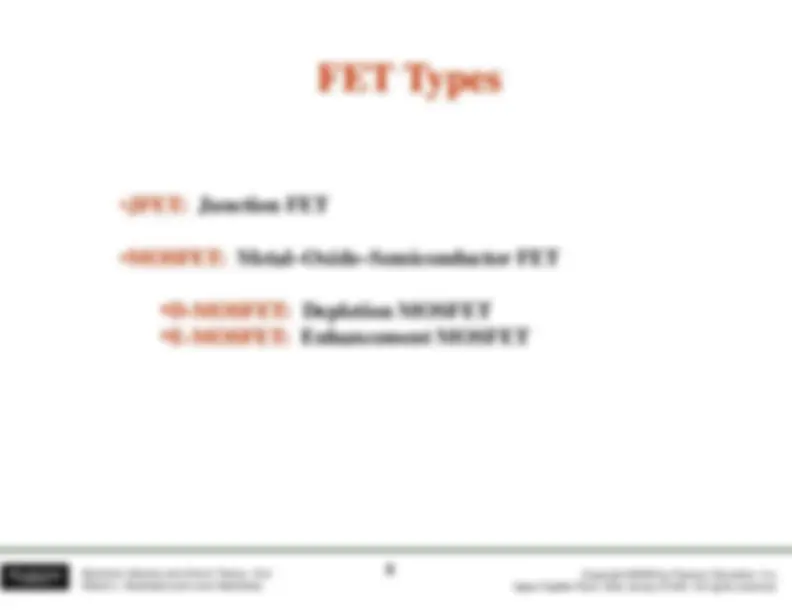
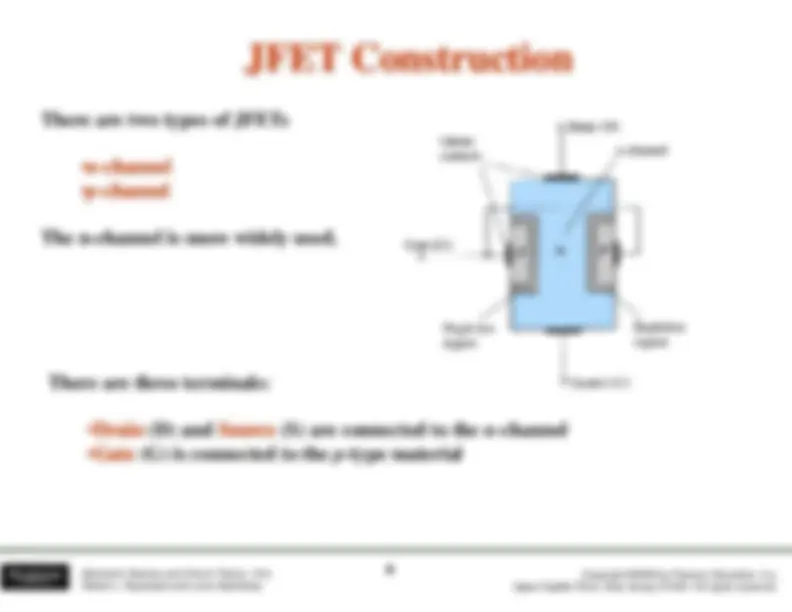
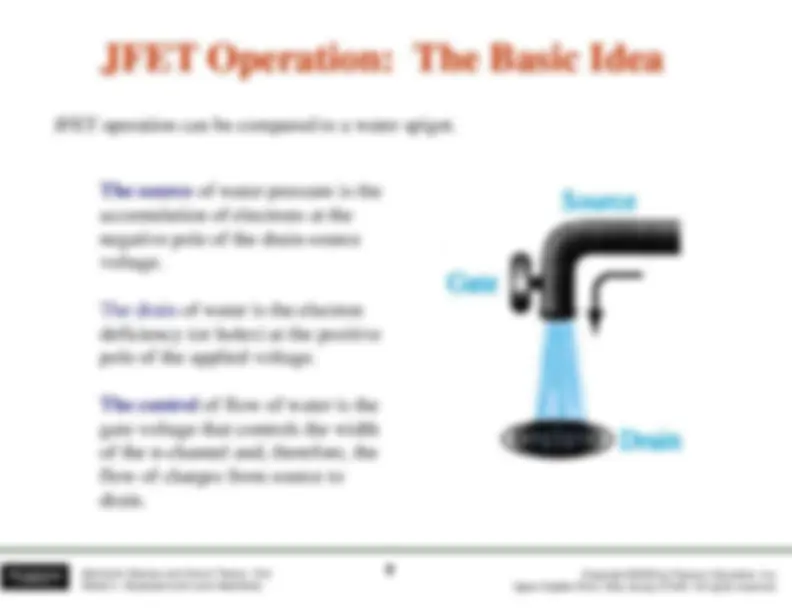
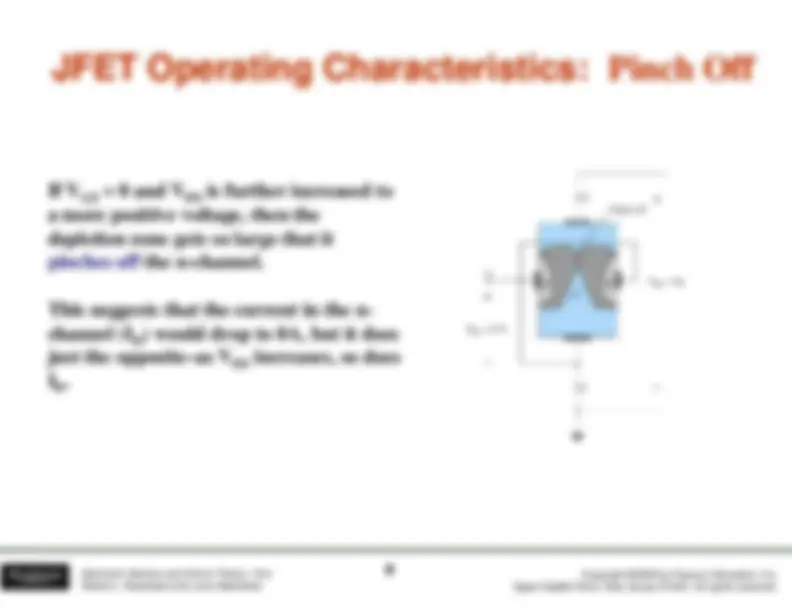
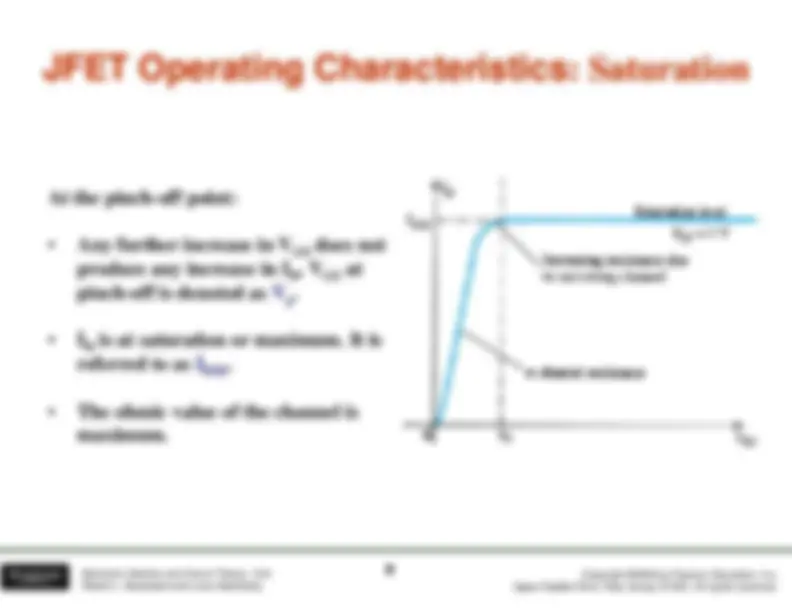
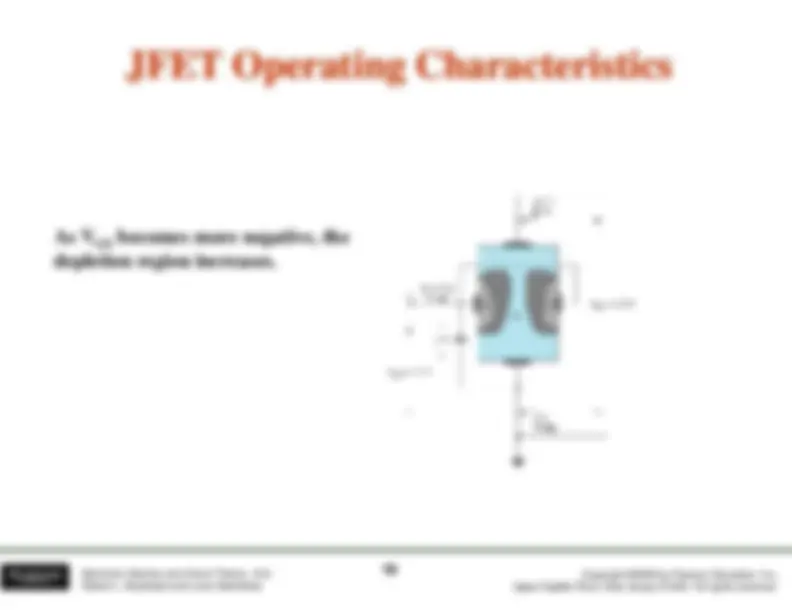
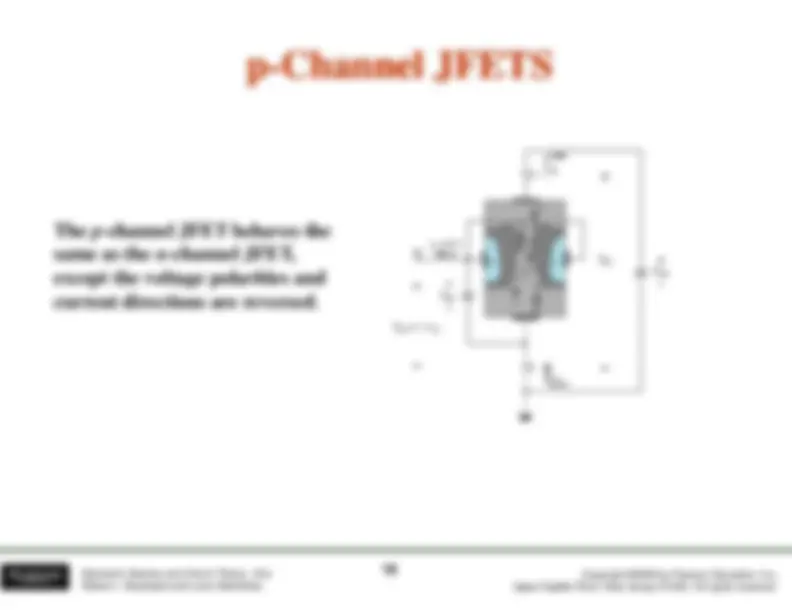
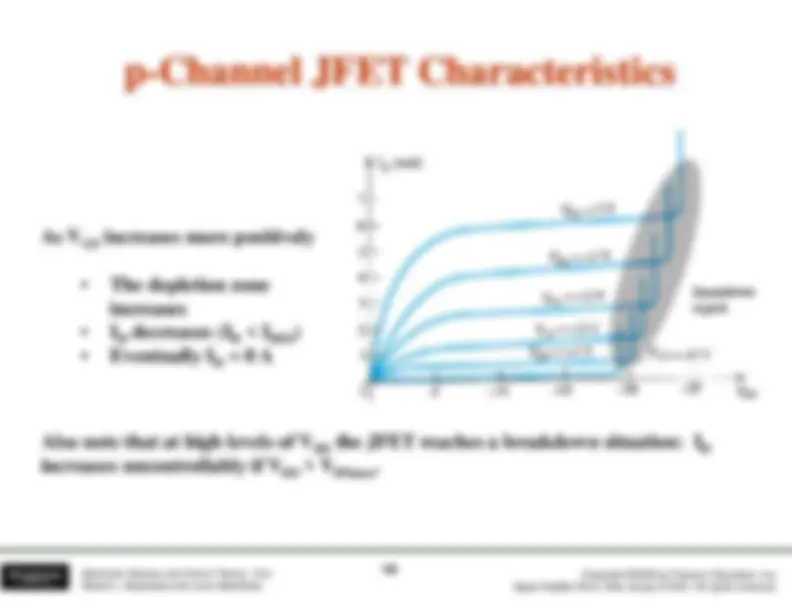
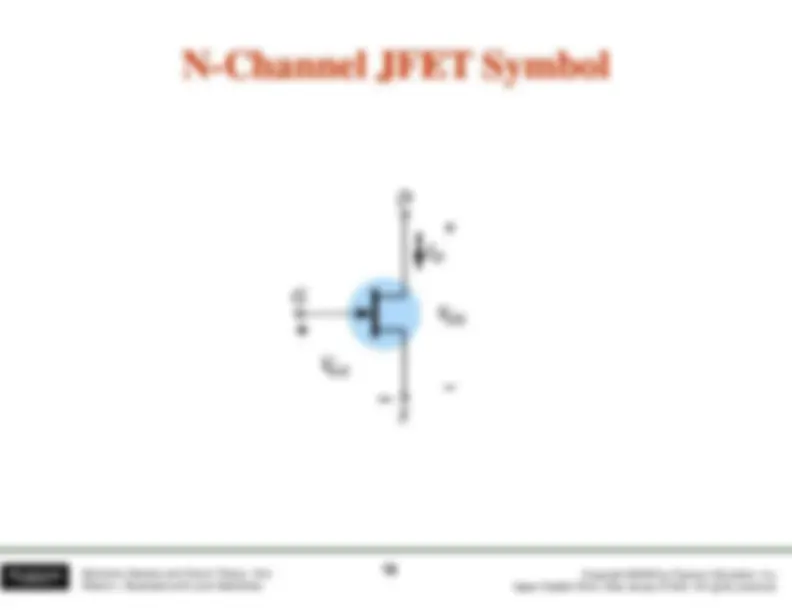
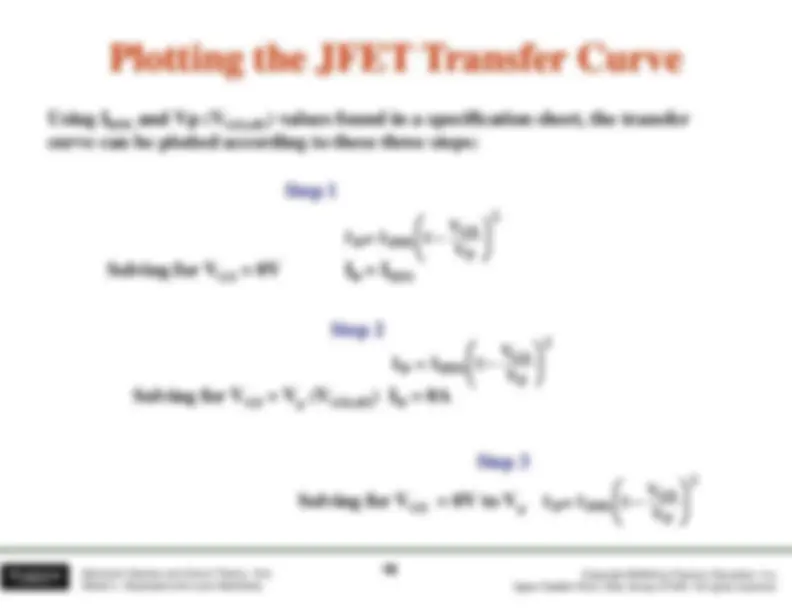
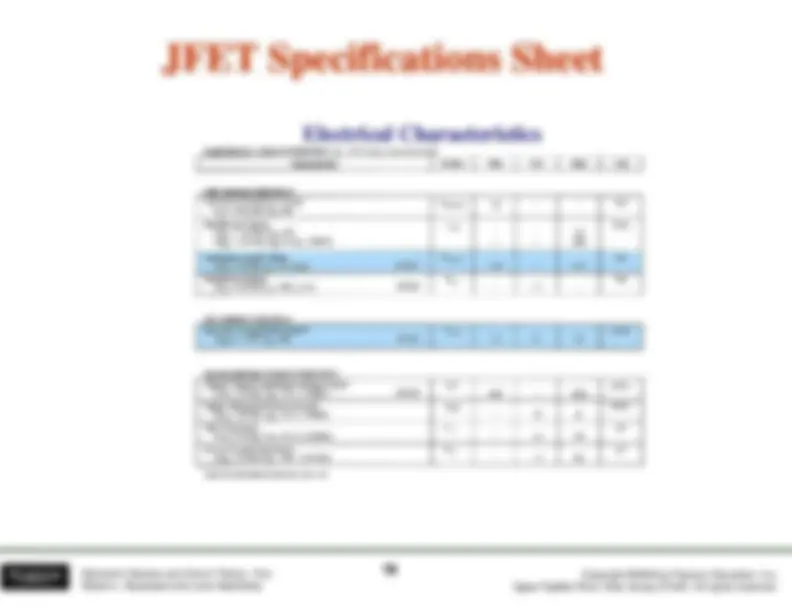
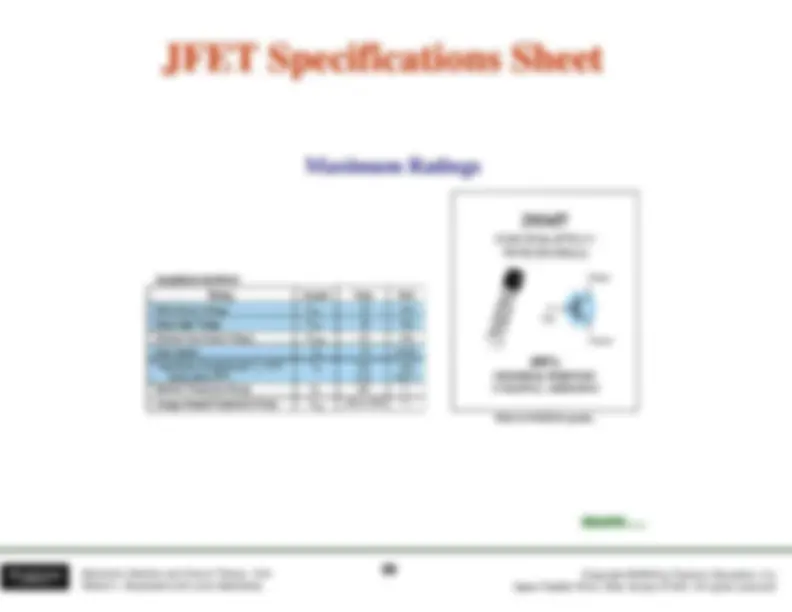
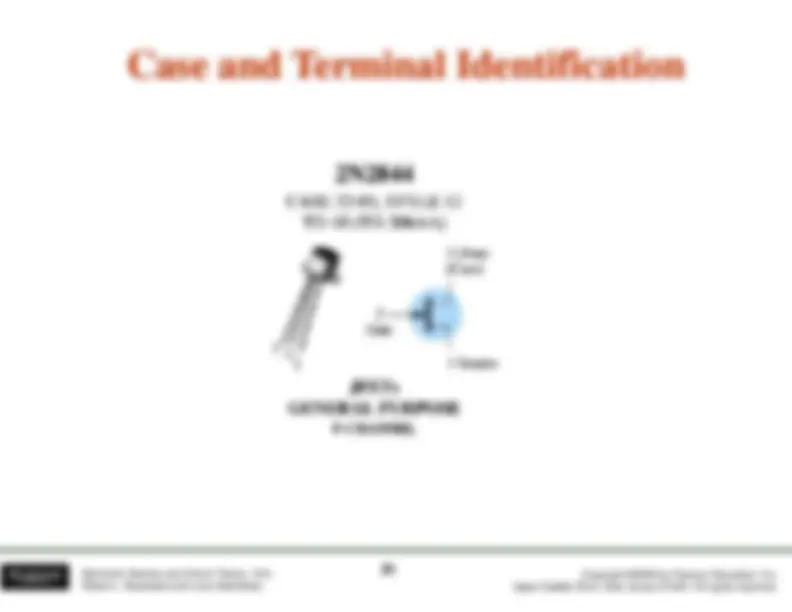
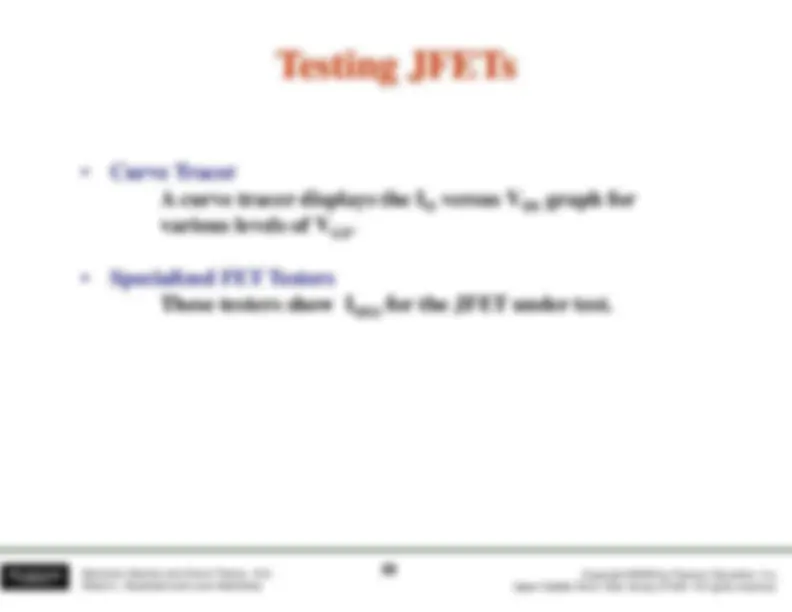
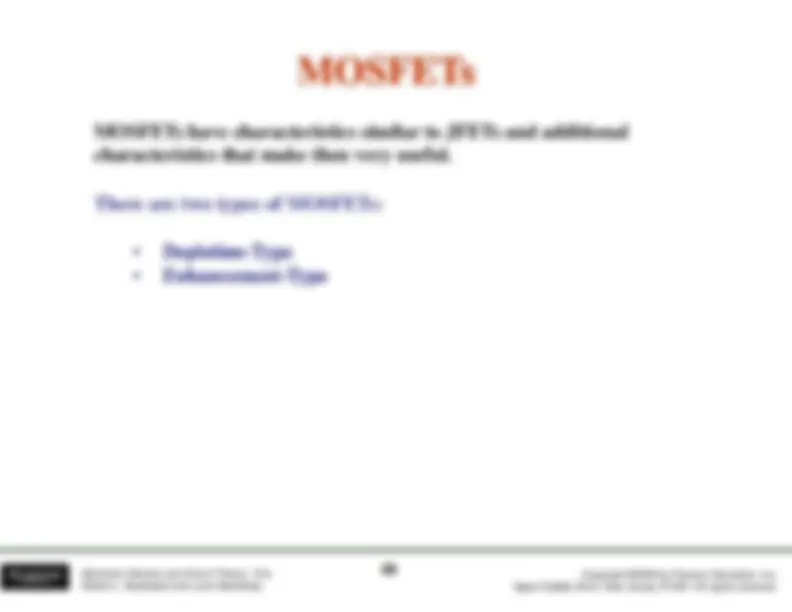
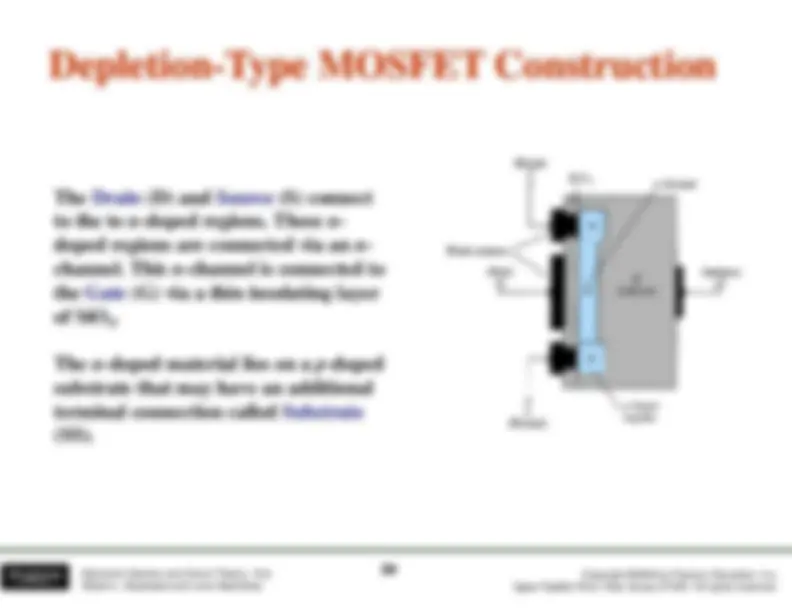
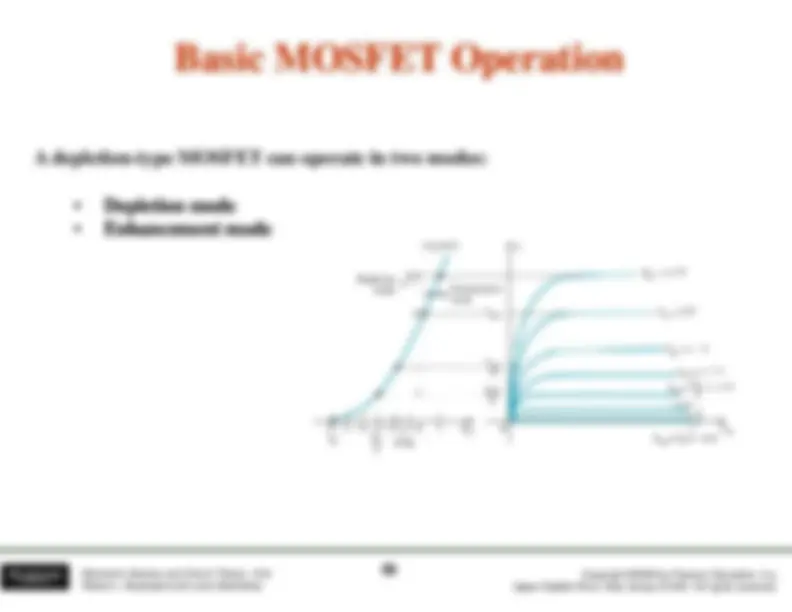
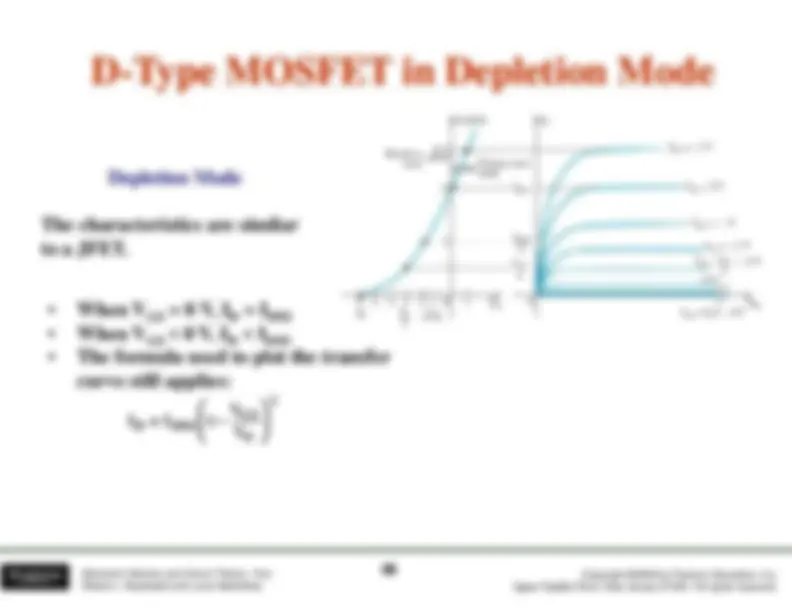
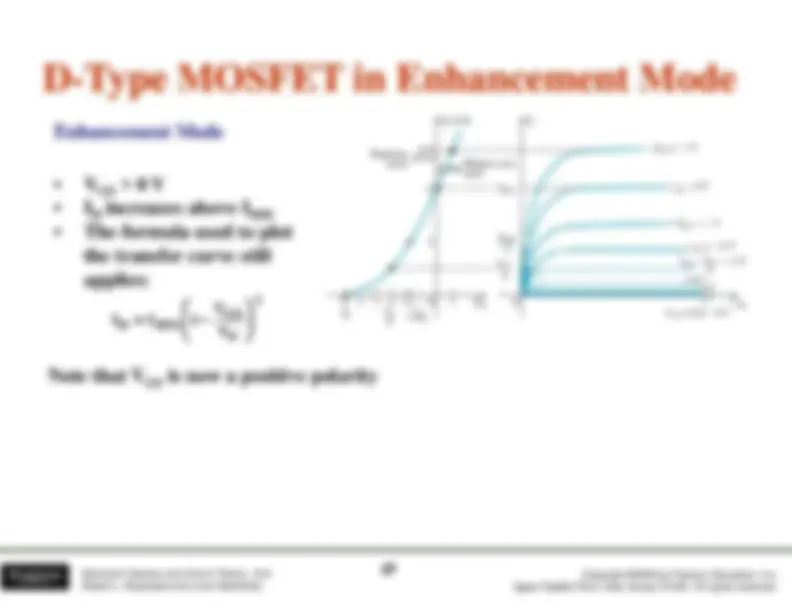
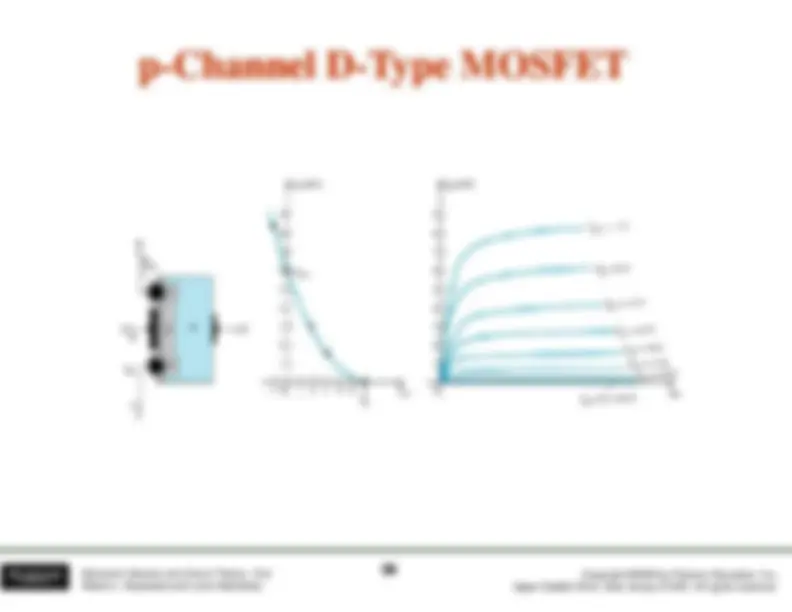
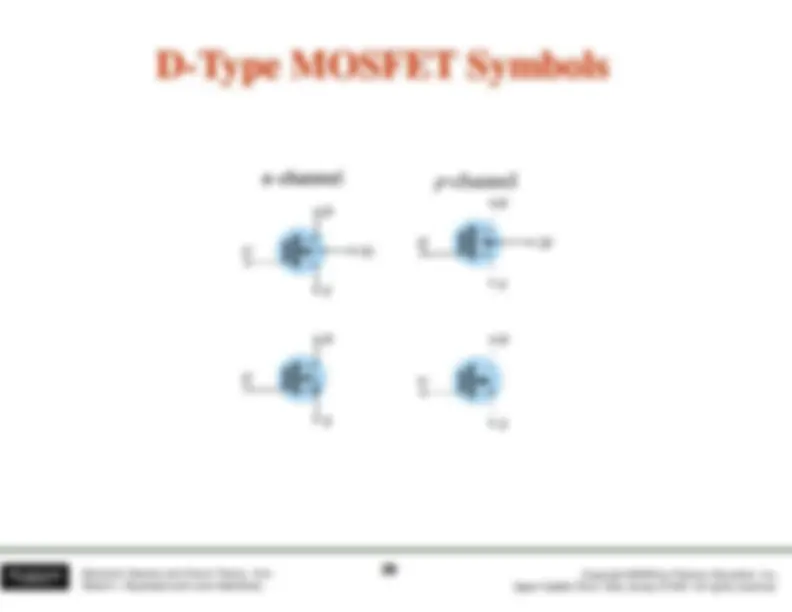
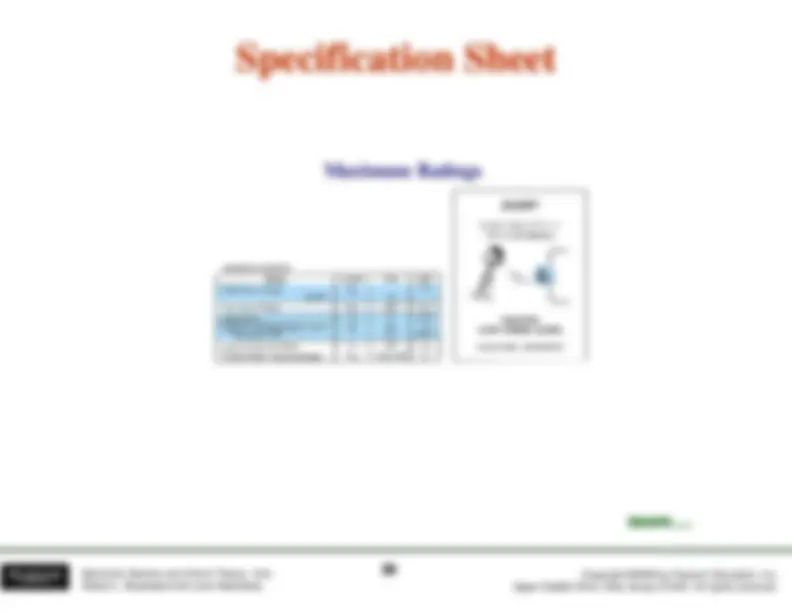
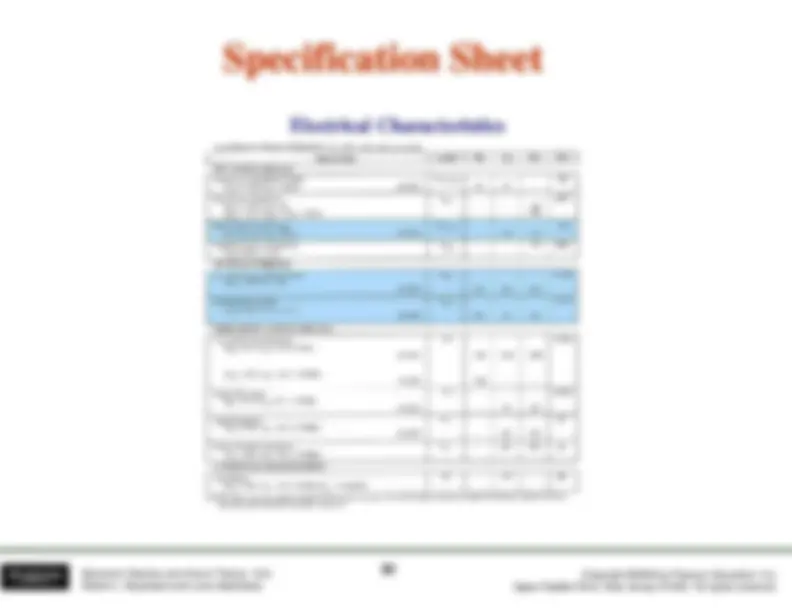
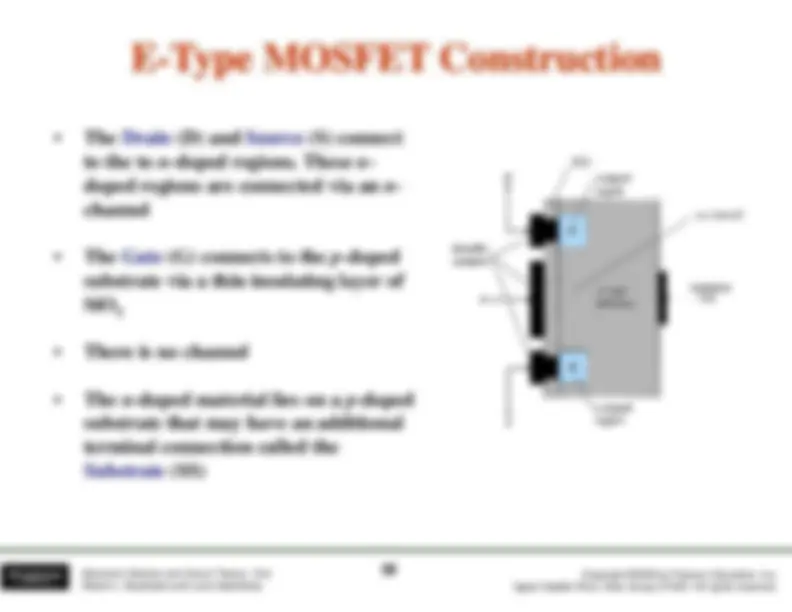
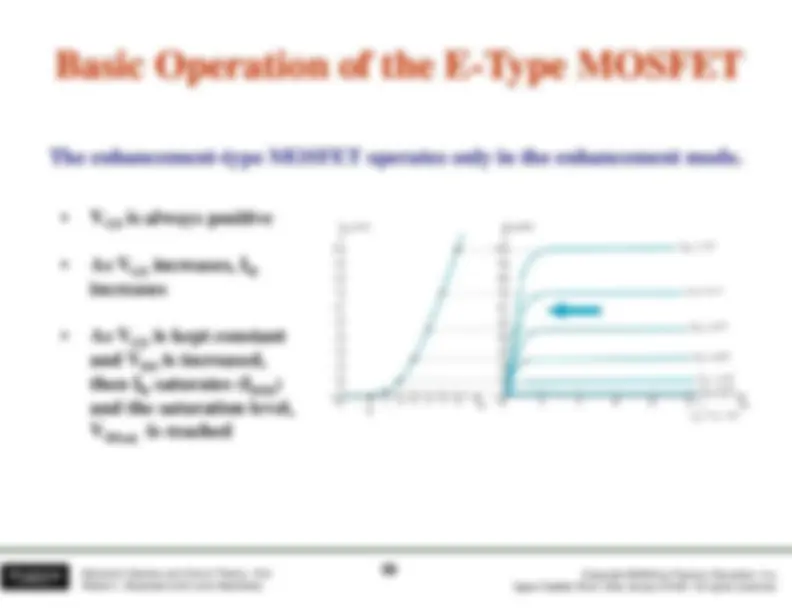
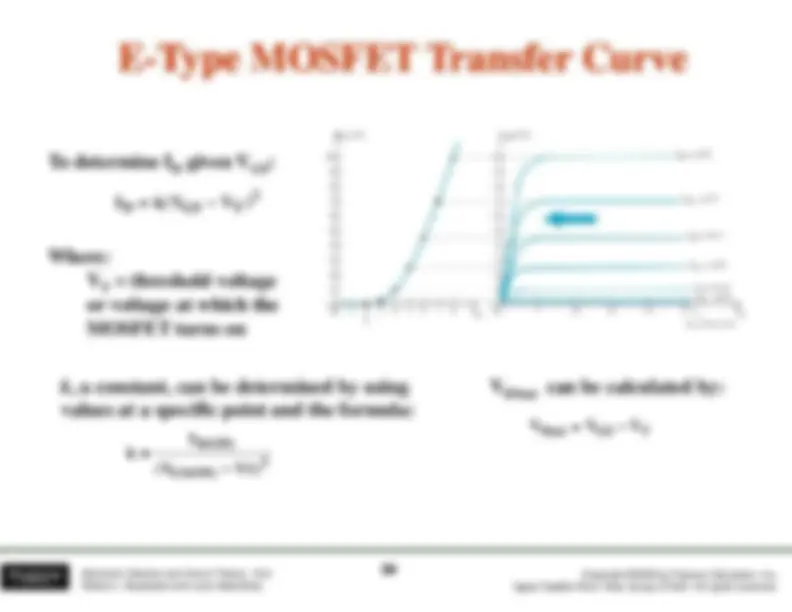
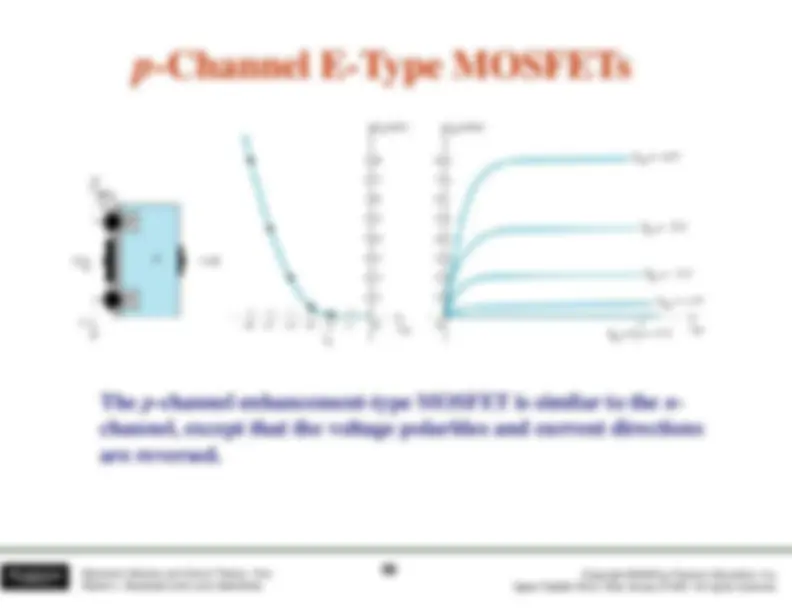
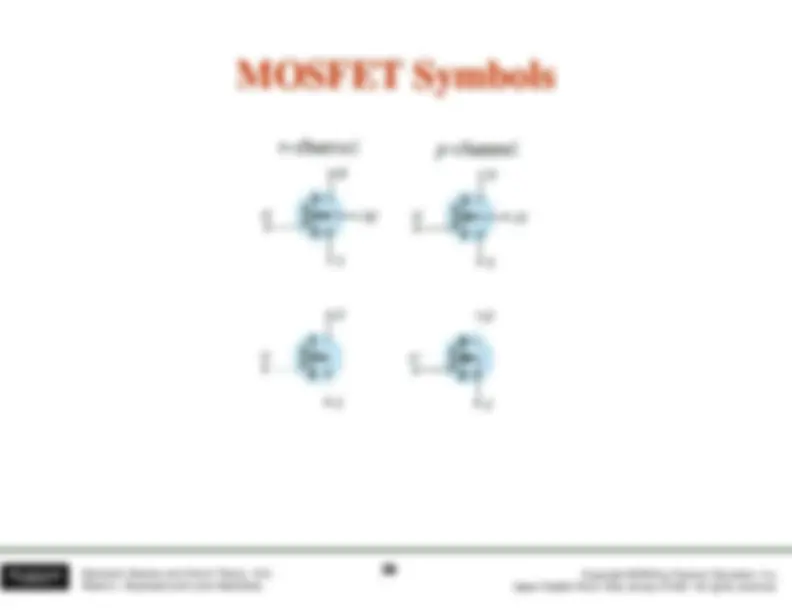
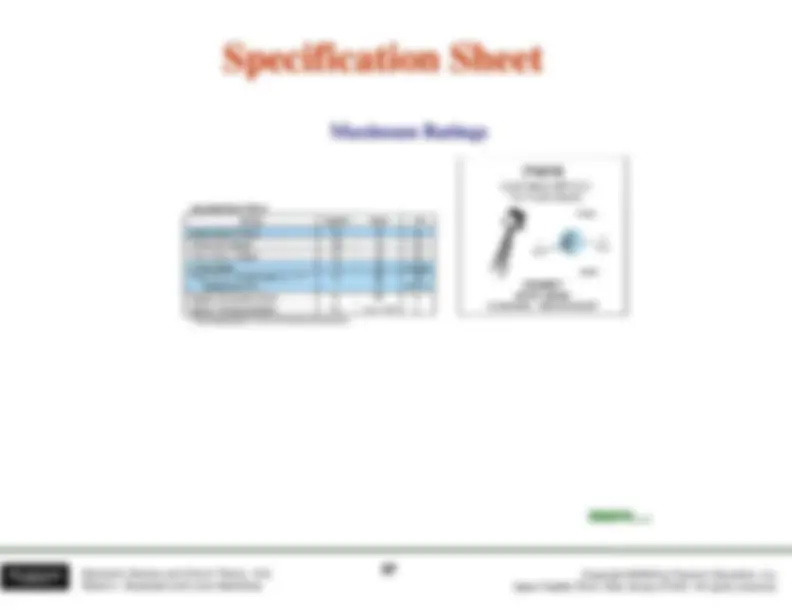
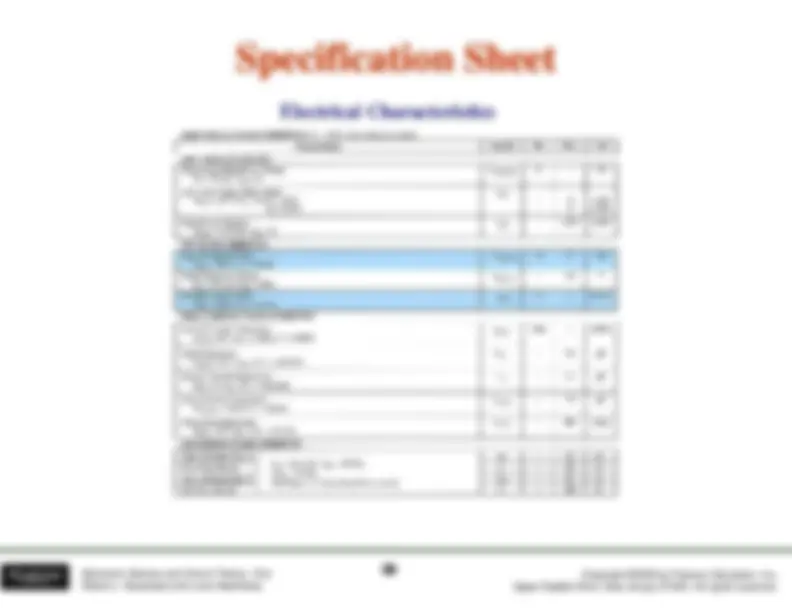
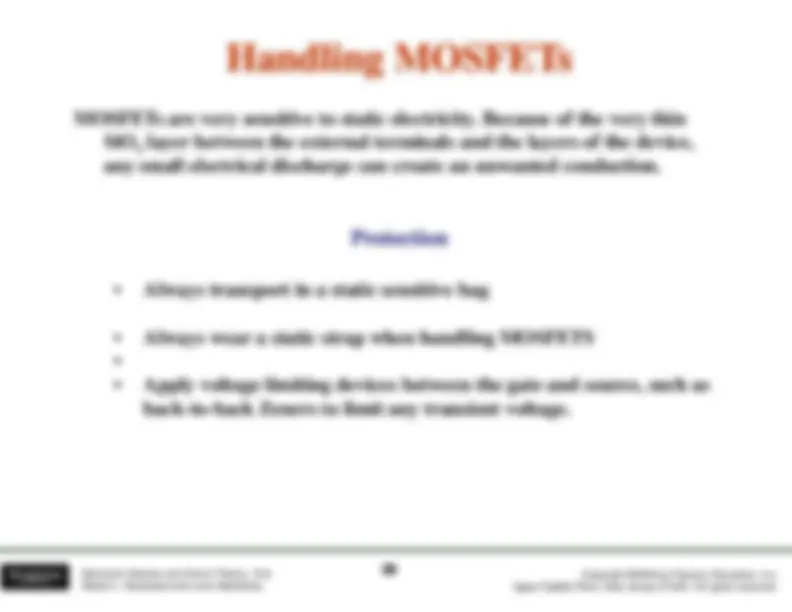
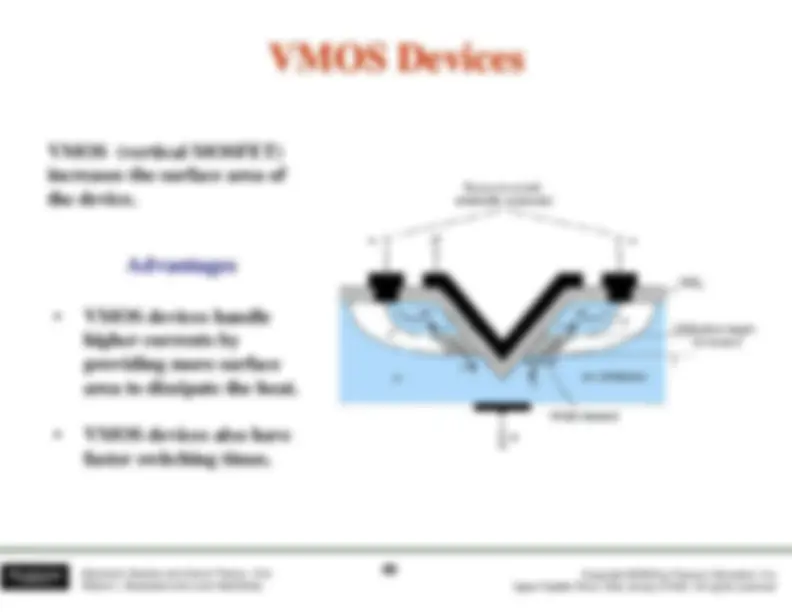
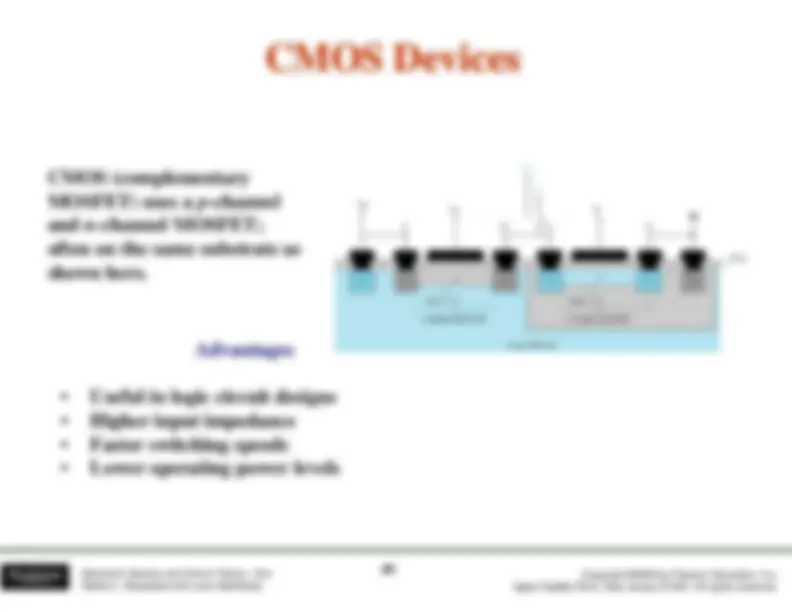
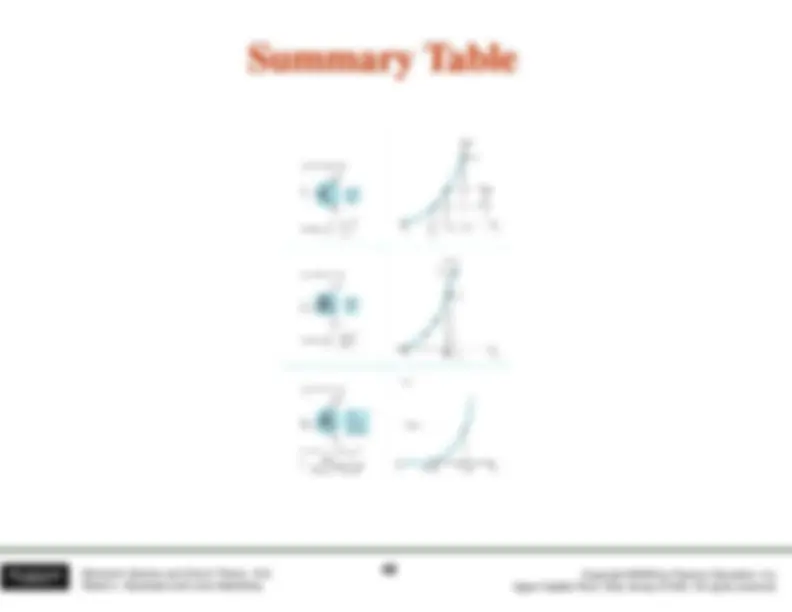


Study with the several resources on Docsity

Earn points by helping other students or get them with a premium plan


Prepare for your exams
Study with the several resources on Docsity

Earn points to download
Earn points by helping other students or get them with a premium plan
Community
Ask the community for help and clear up your study doubts
Discover the best universities in your country according to Docsity users
Free resources
Download our free guides on studying techniques, anxiety management strategies, and thesis advice from Docsity tutors
How Field Effect Transistors Operates
Typology: Lecture notes
1 / 42

This page cannot be seen from the preview
Don't miss anything!



































BJTs are current controlled
FETs are voltage controlled devices. BJTs are current controlleddevices.• FETs have a higher input impedance. BJTs have higher gains.• FETs are less sensitive to temperature variations and are more easilyFETs are less sensitive to temperature variations and are more easilyintegrated on ICs.• FETs are generally more static sensitive than BJTs.
Copyright ©2009 by Pearson Education, Inc. Upper Saddle River, New Jersey 07458 • All rights reserved.
Electronic Devices and Circuit Theory, 10/eRobert L. Boylestad and Louis Nashelsky
22
There are two types of JFETs
h^
l i^
id l
d
The n-channel is more widely used.^ There are three terminals:There are three terminals:
Source (S) are connected to the
n -channel
p -type material
p -type material
Copyright ©2009 by Pearson Education, Inc. Upper Saddle River, New Jersey 07458 • All rights reserved.
Electronic Devices and Circuit Theory, 10/eRobert L. Boylestad and Louis Nashelsky
44
JFET operation can be compared to a water spigot.
The sourceThe source
of water pressure is the
accumulation of electrons at the
i^
l^
f h
d i
negative pole of the drain-sourcevoltage.Th^
d^
i Th^
d^
i^
f^
t^
i^ th
l
t
The drainThe drain of water is the electrondeficiency (or holes) at the positivepole of the applied voltage. The controlThe control
of flow of water is the
gate voltage that controls the widthof the n-channel and therefore theof the n-channel and, therefore, theflow of charges from source todrain.
Copyright ©2009 by Pearson Education, Inc. Upper Saddle River, New Jersey 07458 • All rights reserved.
Electronic Devices and Circuit Theory, 10/eRobert L. Boylestad and Louis Nashelsky
55
GSGS
Three things happen when V
= 0 and VGS
is increased from 0 to a more positiveDS
voltage
The depletion region between p-gateand n-channel increases as electronsfrom n channel combine with holes g
from n-channel combine with holesfrom p-gate.
-^
Increasing the depletion regionIncreasing
the depletion region,
decreases the size of the n-channelwhich increases the resistance of then-channel.n channel.
-^
Even though the n-channel resistanceis increasing, the current (I
) fromD
g,^
source to drain through the n-channel is increasing. This is becauseVDS
is increasing.
Copyright ©2009 by Pearson Education, Inc. Upper Saddle River, New Jersey 07458 • All rights reserved.
Electronic Devices and Circuit Theory, 10/eRobert L. Boylestad and Louis Nashelsky
77
If V
= 0 and VGS
is further increased toDS
a more positive voltage, then thed^
l^ i
l^
h^
i
depletion zone gets so large that itpinches offpinches off the n-channel.Thi
t^ th t th
t i^
th
This suggests that the current in the n-channel (I
) would drop to 0A, but it doesD
just the opposite–as V
increases, so doesDS^
Copyright ©2009 by Pearson Education, Inc. Upper Saddle River, New Jersey 07458 • All rights reserved.
Electronic Devices and Circuit Theory, 10/eRobert L. Boylestad and Louis Nashelsky
88
b^
ti^
th
As V
becomes more negative, theGS depletion region increases.
Copyright ©2009 by Pearson Education, Inc. Upper Saddle River, New Jersey 07458 • All rights reserved.
Electronic Devices and Circuit Theory, 10/eRobert L. Boylestad and Louis Nashelsky
1010
As V
becomes more negative:GS
The JFET experiencespinch-off at a lower voltage (VP
Idecreases (ID^
DSS ) even
th^
h V
i
i^
d
though V
is increased.DS
Eventually I
reaches 0 A.D
at this point is called V VGS
at this point is called V
p
or V
GS(off)
i^
f^
i^
i
Also note that at high levels of V
the JFET reaches a breakdown situation. IDS
D
increases uncontrollably if V
DSmax
Copyright ©2009 by Pearson Education, Inc. Upper Saddle River, New Jersey 07458 • All rights reserved.
Electronic Devices and Circuit Theory, 10/eRobert L. Boylestad and Louis Nashelsky
1111
The
p -channel JFET behaves the The
p -channel JFET behaves the same as the
n -channel JFET,
except the voltage polarities andcurrent directions are reversedcurrent directions are reversed
Copyright ©2009 by Pearson Education, Inc. Upper Saddle River, New Jersey 07458 • All rights reserved.
Electronic Devices and Circuit Theory, 10/eRobert L. Boylestad and Louis Nashelsky
1313
i^
iti^
l
As V
increases more positivelyGS (^) • The depletion zoneincreasesincreases
-^
Idecreases (ID^
DSS
Eventually I
Also note that at high levels of V
the JFET reaches a breakdown situation: IDS^
D
increases uncontrollably if V
DSmax
Copyright ©2009 by Pearson Education, Inc. Upper Saddle River, New Jersey 07458 • All rights reserved.
Electronic Devices and Circuit Theory, 10/eRobert L. Boylestad and Louis Nashelsky
1414
The transfer characteristic of input-to-output is not as straightforward ina JFET as it is in a BJT.In a BJT,
β^ indicates the relationship between I
(input) and IB^
(output).C
In a JFET the relationship of V
(input) and IGS
(output) is a little moreD
In a JFET, the relationship of V
(input) and IGS
(output) is a little moreD
complicated:
2 V V 1 DSS D
GS P
⎞⎟ ⎟⎟⎠ ⎛⎜−⎜⎜⎝
Copyright ©2009 by Pearson Education, Inc. Upper Saddle River, New Jersey 07458 • All rights reserved.
Electronic Devices and Circuit Theory, 10/eRobert L. Boylestad and Louis Nashelsky
1616
This graph shows thevalue of I
for aD^
given value of Vgiven value of V
Copyright ©2009 by Pearson Education, Inc. Upper Saddle River, New Jersey 07458 • All rights reserved.
Electronic Devices and Circuit Theory, 10/eRobert L. Boylestad and Louis Nashelsky
1717
Copyright ©2009 by Pearson Education, Inc. Upper Saddle River, New Jersey 07458 • All rights reserved.
Electronic Devices and Circuit Theory, 10/eRobert L. Boylestad and Louis Nashelsky
1919
more…more… Copyright ©2009 by Pearson Education, Inc. Upper Saddle River, New Jersey 07458 • All rights reserved.
Electronic Devices and Circuit Theory, 10/eRobert L. Boylestad and Louis Nashelsky
2020